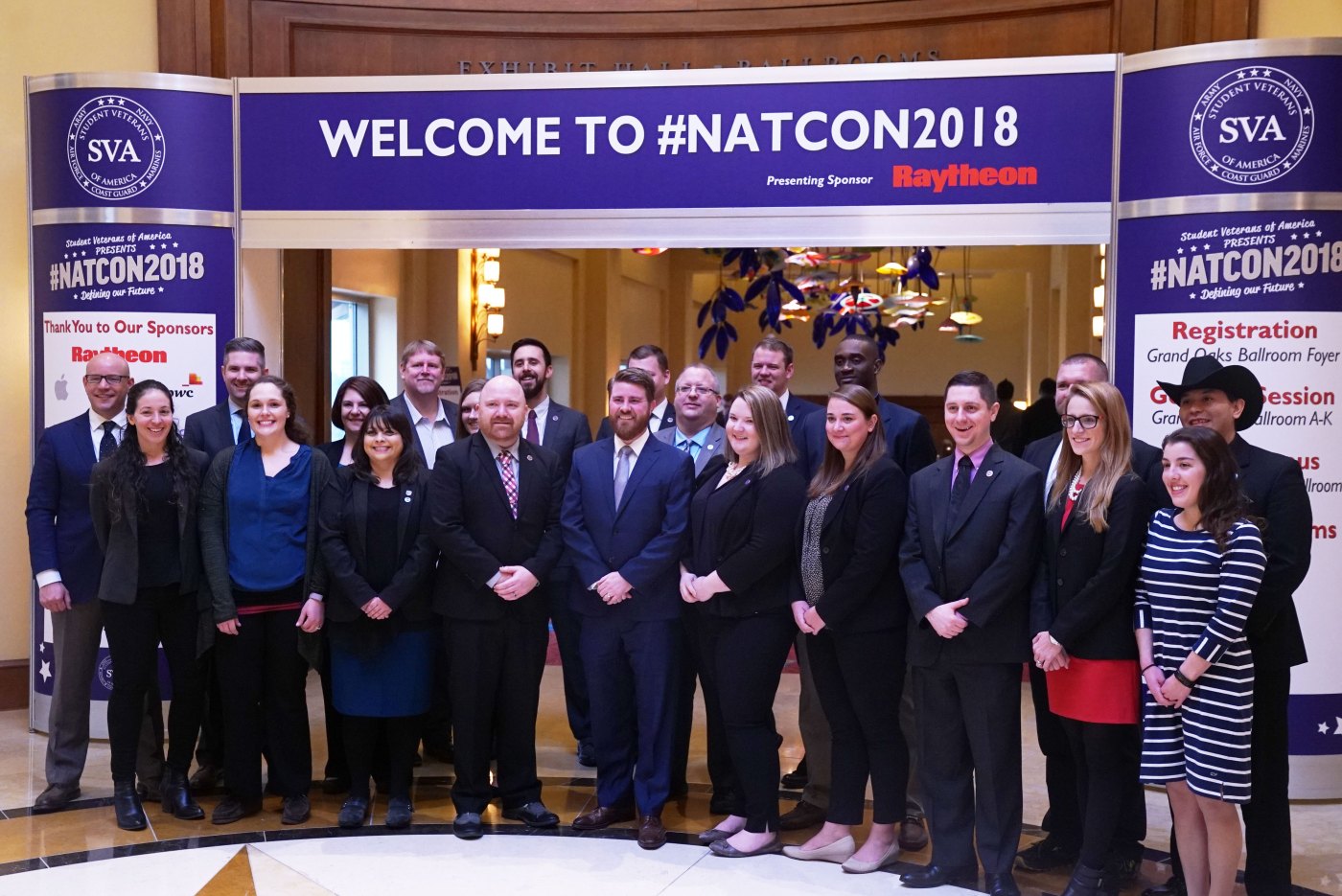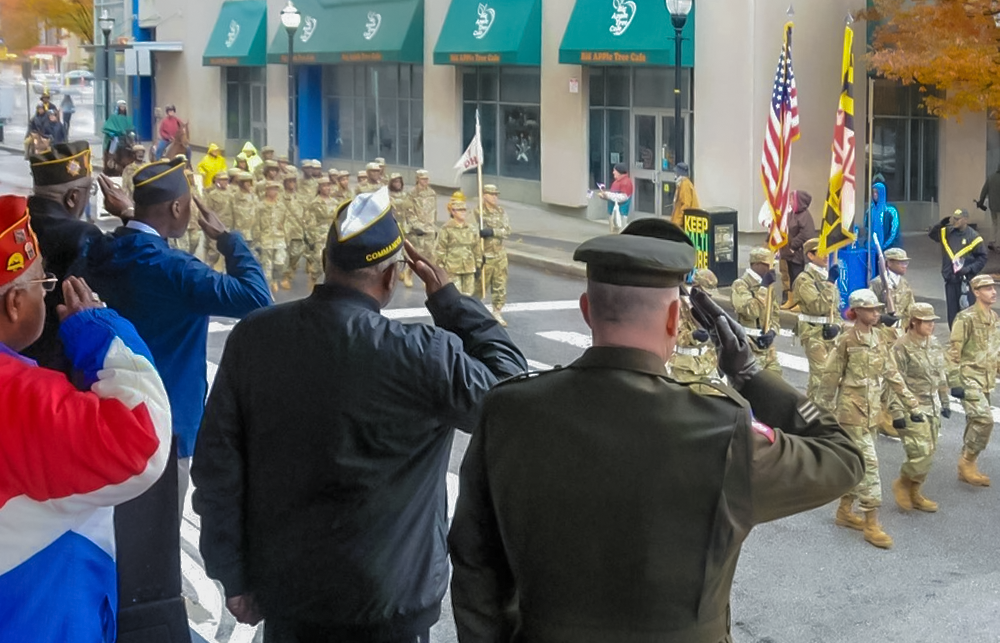To kick off 2018, thousands of student Veterans and their supporters convened in San Antonio, Texas, for the annual Student Veterans of America (SVA) conference. The conference lasted two and half days, providing breakout sessions and
keynotes to help inspire student Veterans to continue their success in higher education and to nurture their Veteran groups on campus. Today, Jan. 11, SVA celebrates its 10th anniversary. Both occasions highlight how important it is that we support Veterans in higher education, and how richer campuses and communities are because of these student Veterans.
Student Veterans now make up 1500 student Veteran chapters across the nation, plus four countries overseas: Japan, Germany, Italy and France. Many SVA chapters are often comprised of prior-military, reservists, National Guard and dependents. Veterans attend universities from coast to coast, in every conference, in major cities, in rural areas and everywhere in between.
- Veterans graduate at a rate of 72 percent compared to 66 percent of their peers.
- Veterans with a bachelor’s degree earns an average of $17,000 more per year than those that have not served in the military. Veterans with advanced degrees see nearly $30,000 more in their annual salary.
- Since 2009, Veterans have earned 453,000 degrees. In 10 years, it is expected that student Veterans will have earned 1.4 million degrees.
- 25 percent of Veterans earn more than one degree or certificate.
Veterans are pursuing degrees across all programs and platforms. Business programs are most popular, followed by liberal arts and sciences, health related fields and homeland security.
During my time at the conference, I sat down with several of the Student Veteran of the Year finalists. Most of them had founded the SVA chapter at their school. Some of them were credited with the creation of a Veteran Center or study area on campus. Each finalist was nominated by a colleague or community member that recognized the value that Veteran brought to their campus, and were as humble as they were exceptional. You can hear from these Veterans in episodes 73 through 78 of Borne the Battle.
The experience of being a student Veteran is a unique one. Most student Veterans attend their first college class having multiple years of “real world” and international experience. They bring a perspective that is valuable in many ways. “I think people are waking up to it. I think at first there was an assumption that was aligned with societies’ views of Veterans that we may be damaged or broken and require extra help,” said Jared Lyon, SVA President. “Universities are really waking up to the enrichment that is found with the Veterans that enroll into their institutions of higher learning. Veterans culturally are bringing a diversity of thought but we’re also bringing a diversity of lived experience to the classroom.”
Our opportunity as a nation to deliver our promise to Veterans is made possible by the always-improving education benefits provided to Veterans, starting with The Servicemen’s Readjustment Act, which was signed in 1944, and led to the Montgomery GI Bill, the Post 9/11 GI Bill and 2017’s Forever GI Bill. We can go even farther and trace our efforts to serve student Veterans to two moments in history, brought to us by our 16th president.
Topics in this story
More Stories
After using the G.I. Bill, Army Veteran Adam Boren found his connection to his community through soccer.
VA and the Veterans Day National Committee (VDNC) invites cities, towns, and non-profit groups across the country to join us in showing appreciation for Veterans by applying to hold VA-recognized regional Veterans Day observances.
VA and the Veterans Day National Committee are now accepting entries for the 2025 Veterans Day Poster Contest. Submissions are due by 11:59 p.m. (EDT) on May 2, 2025.








I am very grateful for the Post 9/11 GI Bill and the VR&E program that gave me a total of 50 months of free education. December 17, 2017 was a memorable day for me for it is the last day of school. Yes, I have completed my 2nd Bachelors Degree using the Post 9/11 GI Bill in April 2013; completed my MBA in August 2014; completed my MS in Human Resources in August 2017 and my MA in Organizational Leadership in December 2017, and this is with the Housing Allowance of an E-5. Now, it’s my turn as a “VA Benefits Advisor” to educate separating/retiring and veterans to maximize their hard earned benefits and it is in fulfilling President Lincoln’s Promise: “To care for him who shall have borne the battle, and for his widow, and orphan.”
Really appreciate it. As a high school student my “grades” were average. I couldn’t wait to graduate and get away from school. At graduation time, after five years, I was chosen to be the No.1 student in my class.
This was a very interesting article. As a high school student my “grades” were average. I couldn’t wait to graduate and get away from school. However, I was drafted. After 2 years of active Army service, I had learned a lot from my fellow buddies and officers, many of whom were college grads. I decided to come home from Europe with a plan to get a college degree. At that time, I was accepted as a Freshman into the college of my choice. My discipline helped; I was determined to do well. That summer, I got some books on various subjects and started studying, so that I’d be prepared as a freshman. At graduation time, after four years, I was chosen to be the No.1 student in my class.
All the way
I need to know what funds are available to me so that I can continue my education at ULV college. Any help or assistance that you can give me at this time would be greatly appreciated. My home phone is (redacted) or cell (redacted). My home address is (redacted) Las Vegas, NV (redacted).